In a transistor, we know that current amplification factor alpha (DC) for CB Configuration is given by :
Alpha = Ic / Ie
Where, Ic = collector current; Ie = Emitter current
This implies that :
Ic = alpha × Ie ....................(1)
Also, the total current is given by :
Ic = alpha × Ie + Icbo ................(2)
Where, Icbo = collector base current with open Emitter (leakage current)
From 1 and 2,
Ic = Ic + Icbo
Icbo = 0 ...................................(3)
This means for any numerical values of alpha, Ic and Ie, the leakage current is always going to be 0. But practically, this is not the case. A small current of the order of micro/nano amps flows as Leakage current. This contradicts the above equation. Does this mean to say that the above equation is faulty? Please explain.
check out this image from my textbook... This is where i got the second equation which I have highlighted in yellow. Also have a look at the image at the top right.
